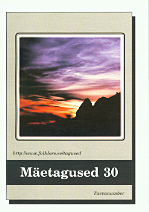Kuu-uskumuste aegruumilisest kontekstist
On the Context of Time and Space of Moon-related Beliefs
Author(s): Jaak JaanisteSubject(s): Customs / Folklore
Published by: Eesti Kirjandusmuuseum
Summary/Abstract: The article explores the laws in the seeming movement of the moon and which aspects of this need special consideration while interpreting ethnoastronomy. The examples used refer to the Estonian geographical latitude 58-60 degrees north. The classical worldview originates mainly from the area of 40 degrees latitude. If we consider the three main economic regions of the world - Europe, the USA and Japan-China - all these remain roughly on the latitude of the Mediterranean region. Since most science and pedagogical theories originate in these regions, the one-sidedness of textbooks is quite understandable. There are no long-term changes in the movement of the moon. The precession of the orbit (the node shift) and the repetition of eclipses (the Saros) fall into a cycle of less than 20 years. Secular changes (such as the precession of the axis of the earth) do not influence the seeming movement of the moon. On greater latitudes (55 to 70 degrees) the moon's axis is usually perpendicular to the horizon. Thus, the full moon is always seen in the same position and figures seen on its surface should be stabile. The uniqueness of northern folklore, its astronomical aspects included, has enchanted researchers for more than a century.
Journal: Mäetagused. Hüperajakiri
- Issue Year: 2005
- Issue No: 30
- Page Range: 151-162
- Page Count: 12
- Language: Estonian

